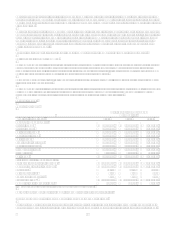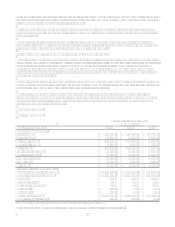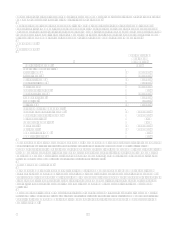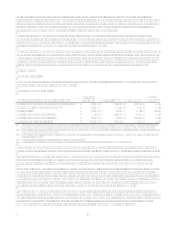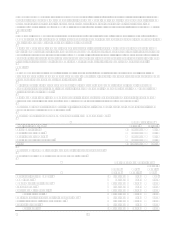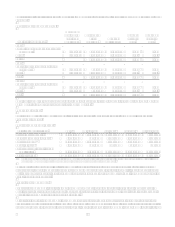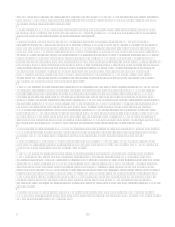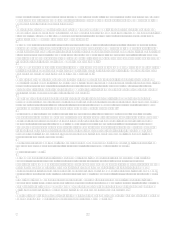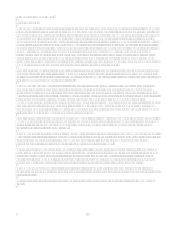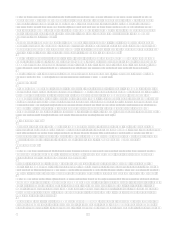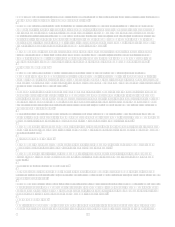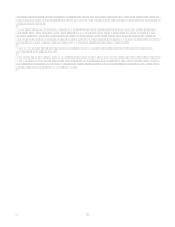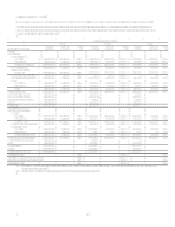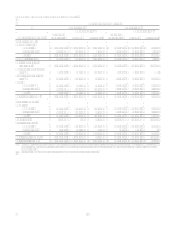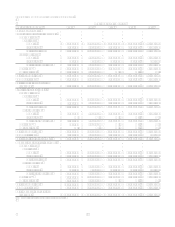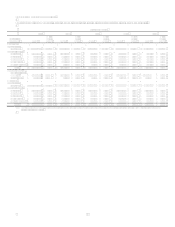Capital One 2006 Annual Report Download - page 69
Download and view the complete annual report
Please find page 69 of the 2006 Capital One annual report below. You can navigate through the pages in the report by either clicking on the pages listed below, or by using the keyword search tool below to find specific information within the annual report. 51
IX. Market Risk Management
Interest Rate Risk
The management of interest rate risk, or the risk that earnings will be diminished by changes in interest rates, is fundamental
for banking institutions. Like other banks, the Company borrows money from other institutions and depositors, which it uses
to make loans to customers and invest in debt securities and other earning assets. The Company earns interest on these loans
and assets and pays interest on the money it borrows from institutions and depositors. If the rate of interest it pays on its
borrowings and deposits increases more than the rate of interest it earns on its assets, the Companys net interest income, and
therefore its earnings, will be diminished. The Companys earnings could also be negatively impacted if the interest rates it
charges on its earning assets fall more quickly than the rates it pays on its borrowings and deposits. Changes in interest rates
and competitor responses to those changes may affect the rate of customer pre-payments for mortgages and auto and
installment loans and may affect the balances customers carry on their credit cards. These changes can reduce the overall
yield on its earning asset portfolio. Changes in interest rates and competitor responses to these changes may also impact
customer decisions to maintain balances in the deposit accounts they have with the Company. These changes may require the
Company to replace withdrawn balances with higher cost alternative sources of funding.
In addition to the impact to current earnings, interest rate risk also refers to changes in the net present value of assets and off-
balance sheet positions less liabilities (termed economic value of equity) due to interest rate changes. Economic value of
equity could be affected to the extent that the market value of the Companys assets, liabilities and off-balance sheet positions
do not respond equally to changes in interest rates.
The Companys measurement of interest rate risk considers both earnings and market value exposures. The consolidated
balance sheet and all off-balance sheet positions are included in the analysis. The analysis reflects known balances and
contractual maturities when available. Balance sheet positions lacking contractual maturities and those with a likelihood of
maturity prior to their contractual term are assumed to mature consistent with business line expectations or, when available in
the case of marketable securities, market expectations. As of December 31, 2006, the Companys Asset/Liability
Management Policy limited the change in projected 12-month net interest income due to instantaneous parallel rate shocks of
+/-200 basis points to less than 3% of base net interest income. As of December 31, 2006 the Company estimated a 1.6%
reduction in 12-month net interest income for an immediate 200 basis point rate increase and a 0.5% reduction in 12-month
net interest income for an immediate 200 basis point rate decline.
In addition to limits related to possible changes in 12-month net interest income, as of December 31, 2006 the Asset/Liability
Management Policy limited the pre-tax change in economic value of equity due to instantaneous parallel rate shocks of 200
basis points to less than 12%. As of December 31, 2006, the estimated reduction in economic value of equity due to an
adverse 200 basis point rate shock was 3.9%.
The Company has revised its Asset/Liability Management Policy effective January 31, 2007. The Company has broadened its
measure of interest rate risk to include the impact to current earnings of changes in the valuation of mortgage servicing rights
as a result of changes in interest rates. The Company continues to limit the decline in 12-month earnings due to an
instantaneous parallel interest rate shock to less than 3% of base net interest income.
The precision of the measures used to manage interest rate risk is limited due to the inherent uncertainty of the underlying
forecast assumptions. These measures do not consider the impact of the effects of changes in the overall level of economic
activity associated with various interest rate scenarios. In addition, the measurement of interest rate sensitivity does not
reflect the ability of management to take action to mitigate further exposure to changes in interest rates, including, within
legal and competitive constraints, the repricing of interest rates on outstanding credit card loans and deposits.
The Company manages and mitigates its interest rate sensitivity through several techniques, which include, but are not
limited to, changing the maturity and repricing characteristics of various balance sheet categories and by entering into interest
rate derivatives.
Table 11 reflects the interest rate repricing schedule for earning assets and interest-bearing liabilities as of December 31,
2006.


